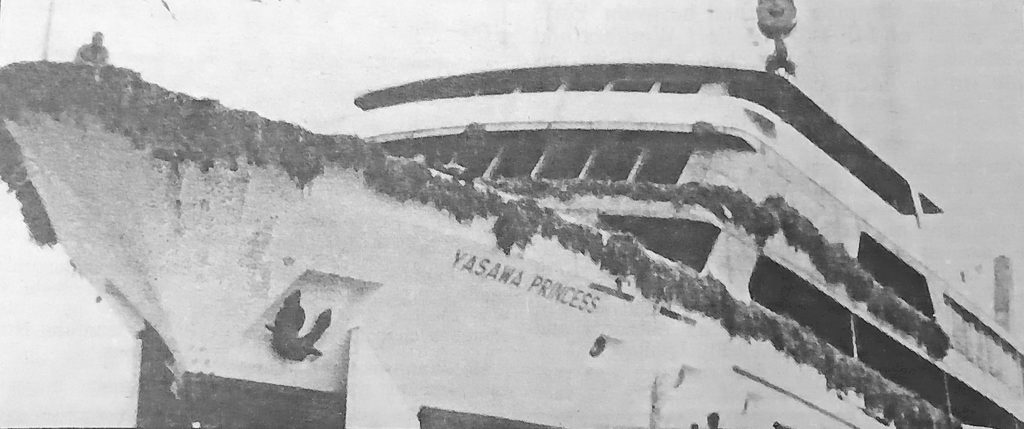In 1990, the Lautoka-based Blue Lagoon Cruises Limited embarked on a $16million five-year development program which included the construction of three new cruise vessels.
According to an article published by The Fiji Times on March 7 that same year, the company had built up a formidable reputation over the years for its luxury tourist cruises between the Mamanuca island resorts and the mainland in the West.
The five-year program also saw the establishment of a newly-equipped marine engineering workshop and training facility, the construction of a new headquarters complex at Lautoka and diversification into a manufacturing industry.
Blue Lagoon Cruises Limited chairman David Wilson said the company, which reported a profit of about $1.5million in 1989, had completed a $1m refurbishing program on its fleet of six cruise ships.
He said the development program reflected the company’s confidence in the future of Fiji’s tourism industry.
“Blue Lagoon Cruises is committed to maintaining its pre-eminent cruising reputation,” Mr Wilson.
“And whilst the program is one of the most significant undertaking by a Fiji-based company and is possibly the largest to date, the decision to proceed immediately was positively influenced by the government’s investment incentives.”
The main ingredient of the program was the company’s commitment to build three new vessels at the Government Shipyard in Suva where the company’s six vessels were built.
“Skills at Government Shipyard have steadily improved over the years and the yard certainly has the capacity to construct vessels to international standards at very competitive rates,” he said.
He said by 1995 Blue Lagoon planned to operate seven vessels on four-day popular cruises, and four-and seven-day club cruises.
This would increase the company’s capacity by almost 50 per cent to approximately 30,000 cruise berths per year.
In addition to its cruise activities, the company planned to convert at least one of its existing 39-metre vessels into a “live-aboard” dive ship and acquire a luxury charter yacht for private cruise charters.
Construction of the first of the new vessels was scheduled to begin by June of 1991.
“All cabins are outboard and of the same size, cabin design and furnishing will resemble first-class hotel rooms each with a modern fiberglass bathroom,” Mr Wilson said.
“Each cabin will feature a queen-size bed or two singles or, if required, three singles.”
As part of the company’s development program, a fibre glass manufacturing plant would be established.
The plant would produce moulded bathrooms for the new vessels, sailboards, canoes and other water sport equipment for passenger use at the company’s island, Nanuya Lailai, in the Yasawa Group.
The development plan for the 20-hectare Nanuya Lailai property was designed to provide first-class onshore facilities for cruise passengers while ensuring protection of the environment, said Mr Wilson.
He said the company’s directors insisted that facilities should blend with the environment and leave the beach untouched.
The complex, to be completed that year, would be mainly timber prefabricated in Lautoka including wide verandas, clubhouse bar, dining room, kitchen, boutique and toilets.
“The facility will be the central focus of the island beach party, one of the traditional highlights of a Blue Lagoon cruise,” Mr Wilson said. He said about 30 tonnes of water would be pumped ashore each from the company’s vessels and a sewerage treatment plant would also be installed.
Also included in the five-year development program was an apprentice training scheme.

